ad - Short form of advertisement.
AD or A.D. - Abbreviation for "Anno Domine," which is Latin, and means "in the year of Our Lord." It is conventionally placed before a number to show that it refers to a year following the birth of Christ, although contemporary experts generally agree that Christ was probably born in 3 BCE. These are fundamentals of the Christian calendar. Other cultures designate years according to other schemes. An alternative term for AD is CE, standing for Common Era. Although CE is a less traditional term, it is globally preferred because it avoids the bias inherent in an insistance upon referring to Christ.
Quotes:
Related links:
Also see A.H. and millennium.
Ada school - Forms of Carolingian art named for Ada, who is said to have been Charlemagne's sister, and patron to a group of sculptors in ivory, and some manuscript illuminators in the late 700s and early 800s.
Also see illumination.
additive - May refer to the additive
system for representing the color
spectrum using combinations
of the primary colors of light — red, green  and
blue — demonstrates combinations which produce an array of lighter,
brighter colors, including
white. This is also called the RGB
(red green blue) system of color mixing. Mixing red and blue
lights, for example, produces magenta.
Mixing blue and green creates cyan,
and curiously, red and green lights combine to produce yellow.
and
blue — demonstrates combinations which produce an array of lighter,
brighter colors, including
white. This is also called the RGB
(red green blue) system of color mixing. Mixing red and blue
lights, for example, produces magenta.
Mixing blue and green creates cyan,
and curiously, red and green lights combine to produce yellow.
Video display devices use combinations of pixels emitting red, green, and blue lights to form all the colors of the images on a screen. In a white region on a screen, all three types of pixels are illuminated. Look at the diagram above depicting the three additive primary colors of light. Notice how white is produced at the intersection of all three. Any two colors of light which produce white light when mixed are considered complementary colors.
![]()
|
Blue + Green = Cyan
|
Also see angle of incidence, CMYK (cyan magenta yellow black), incident light, manipulate, reflected color, reflection, secondary colors, and subtractive.
addorsed - Set back-to-back, especially as in heraldry. The opposite, as when figures face each other, is called "confronting".
Also see ancipital.
adhere - Stick securely. See adhesives and join.
Also see bookplate, collage, and découpage.
adhesion - The act or state of adhering, sticking together.
Also see adhesive, adsorption, cleavage, collage, découpage, and join.
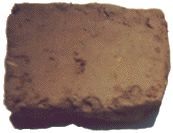
adobe and Adobe - An adobe, traditionally, is a sun-dried, unfired brick of clay, sand, and straw. Contemporary makers of adobes sometimes introduce additional or alternative binders or aggregates. This construction material is traditional to many cultures to which these ingredients were readily available. In the United States this is especially true in the Southwest. Also, a structure built with this kind of brick. Adobe material is sometimes referred to as plaster when it is applied to a structure's surface, usually bricks, for protection and / or decoration.
Adobe (particularly when capitalized) can also refer to Adobe Systems Incorporated, a major producer of graphic design software.
(pr. ə-DOH-bee)
Examples of architecture built of adobes:

Mesopotamia, Khorsabad, the fortified city and palace of Sargon II, 721-705 BCE, a contemporary rendering based upon archaeological excavations. This Mesopotamian citadel and residential city was about a mile square. The city's walls were built of mud brick (adobe) and faced with glazed brick. Stone was available but used for sculpture (see preceding example), not for building. The top of the walls was crenelated. The ziggurat was built in seven levels, each 18 feet high, and each was painted a different color.
![]()
![]()

![]()
Taos Pueblo, New Mexico.
A man making adobe bricks in the southern Morocco town of Tamgroute.
Also see mortar, new media, and wood.
adsorption - When a thin layer of a substance adheres strongly to another, holding to it on a molecular level as if it were glued to it. This situation is more likely to occur with substances in a gelatinous state and with the receiving surface absolutely clean. Often a truly adsorbed layer becomes so firmly attached to the receiving surface that it can be removed only by vigorous abrasion. One example of adsorption occurs in lithography, with the crayon or tusche on the stone or plate so that an adsorbed layer of fatty acid is in position to receive the printing ink. Also see occlude.
aduncous - Hooked; curved inward.
(pr. ə-DUN-kəs)
advertisement - See advertising.

adze - A tool used
in wood carving
to rough  out
a form. It is similar to an ax, but
the blade is set horizontally
in the handle, sloping downwards. It is used for much the same
purpose as a wood chisel and
often for work of such detail,
especially by African carvers.
out
a form. It is similar to an ax, but
the blade is set horizontally
in the handle, sloping downwards. It is used for much the same
purpose as a wood chisel and
often for work of such detail,
especially by African carvers.
Aegean art - Generally refers to works of Crete, Mycenae, and the Cyclades, from 2600-1200 BCE. Aegean painting is colorful and stylized, but with a strong feeling for naturalism.
Also see antiquity, archaeology, Cycladic art, and Greek art.
AEP - See Arts Education Partnership.
aerial view - Seeing from a point of view at a great height, also called a bird's-eye view. Any picture in which the horizon line, and consequently the vanishing point (-s), have been placed near or above the top of the work, this applies to renderings of any subject, but most often to landscapes, cityscapes, etc. (Be careful not to confuse aerial view with aerial perspective.)
Examples:
![]()
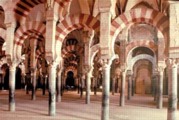
Hypostyle Hall of the Great Mosque of Córdoba,
Spain, begun 786, doubled in area in the 10th century to 585
x 410 feet, with 1,200 columns
supporting horseshoe arches,
patterned with
colored marbles and other stones.
 Although it was converted
into Córdoba's Roman Catholic cathedral
in 1238, the building is known locally as La Mezquita
—The Mosque.
Although it was converted
into Córdoba's Roman Catholic cathedral
in 1238, the building is known locally as La Mezquita
—The Mosque. See an aerial view of the Great Mosque of Córdoba, showing the Christian alterations. See aerial
view and Islamic
art.
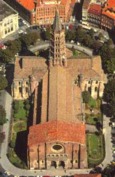

An aerial view photograph of
St. Sernin from one angle,
France, Toulouse, c. 1080-1120, a Romanesque
cathedral. The tower (dating from 1250, with its spire of
1478) belongs to the Gothic
period. Another aerial view from another angle.
A floor plan of St. Sernin. See apse,
chapel, crossing,
cruciform, and nave.
Frank Lloyd Wright (American, 1869-1959), Aerial View for Taliesin II, near Spring Green, Wisconsin, 1914, ink on paper. This drawing was done in conjunction with the first major rebuilding of Taliesin in 1914, and shows an extended composition of elements that terrace and shape the site. In this point of view, lines between rough and cultivated plantings are clearly delineated as part of that composition. Also examine Two Elevation Drawings for Taliesin II, 1914, ink on linen, and Plan for Taliesin III, c. 1925, ink, graphite, and colored pencil on tracing paper.
Also see direction, fish-eye lens, and worm's-eye view.
aertist - What contemporary Russian emigré painter and conceptual artist Aleksandr Melamid (1945-) calls himself, instead of an artist. He has refused to define what the term means, except to say that it does not mean artist. He distances himself from all who feel there is anything particularly special about art. Russian painters and performance artists. Aleksandr Melamid has been associated with Vitaly Komar (1943-) since they were classmates at the Stroganov School and at the Academy of Art in Vilnius. They moved to Israel in 1977, and to the USA in 1978.
aerugo - Patina.
aesthetic experience or æsthetic experience - Experience of intrinsic features of things or events traditionally recognized as worthy of attention and reflection, such as literal, visual, and expressive qualities, which are studied during the art criticism process. Also spelled esthetic.
aesthetician - A specialist in aesthetics. Curiously, some time in the twentieth century, those who specialize in giving facials, manicures, pedicures, and other beauty treatments also came to be called aestheticians.
Also see beauty parlor or beauty salon and cosmetic.
aestheticism or æstheticism - The belief that the pursuit of beauty is the most important goal, and that it is the artist's duty to orchestrate selected elements from nature into a composition that, like music, exists for its own sake, without regard to moral or didactic issues. Prominent in the nineteenth century, now it often carries the connotation of decadence or preciousness. Also spelled estheticism. It is often associated with the fin de siècle circle of writer Oscar Wilde (English, born Ireland, 1854-1900), painter James Abbott McNeill Whistler (American, 1834-1903), and illustrator Aubrey Beardsley (English, 1872-1898).
Examples:
![]()
James Abbott McNeill Whistler (American,
1834-1903), Sketch for Rose and Silver: La Princesse du Pays
de la Porcelaine, 1863-64, oil
on fiberboard, Worcester Art Museum, MA. See orientalism.

James Abbott McNeill Whistler, Grey and Silver: Chelsea Wharf, c. 1864/1868,
oil on canvas,
61.0 x 46.0 cm (24 x 18 1/8 inches), National Gallery of Art,
Washington, DC.
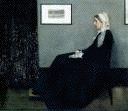
James Abbott McNeill Whistler, Arrangement in Grey and Black No. 1: Portrait
of the Artist's Mother, 1871, oil
on canvas, 4 feet 8 3/4 x
5 feet 3 3/4 inches, Musée d'Orsay, Paris, France. With planes and shapes
flattened, and color
muted, Whistler's portrait demonstrates
his devotion to aestheticism and art
for art's sake. Accordingly, Whistler prefered to describe this paintings as arrangements — much as music is an arrangement of pure forms — making him a precursor to abstract art. See rectangle.

James Abbott McNeil Whistler, Nocturne in Black and Gold: The Falling Rocket, c. 1874, oil
on canvas, 23 3/4 x 18 3/8
inches, Detroit Institute of Arts. Whistler's nocturnes were tangible demonstrations
of his creed of aestheticism, which, when expressed in this painting
led to an 1878 lawsuit with John Ruskin (1810-1900, English writer,
critic, and artist). Whistler accused Ruskin of slander, when the critic published his opinion of Nocturne in Black and Gold: The Falling
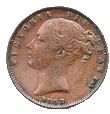 Rocket. Ruskin had written,"I have seen, and heard, much of cockney impudence before now; but never expected to hear a coxcomb ask two hundred guineas for flinging a pot of paint in the public's face." Whistler won the libel suit and the fine
of one
Rocket. Ruskin had written,"I have seen, and heard, much of cockney impudence before now; but never expected to hear a coxcomb ask two hundred guineas for flinging a pot of paint in the public's face." Whistler won the libel suit and the fine
of one farthing (the English coin of least worth), and yet the
affair bankrupted him. See numismatics and pyrotechnics.

James Abbott McNeil Whistler, Nocturne: The Thames at Battersea, 1878,
lithograph,
6 3/4 x 10 1/8 inches (17.1 x 25.7 cm), Metropolitan Museum of
Art, NY. Whistler analyzed his fascination for the Thames at
night in his Ten O'Clock Lecture, 1885.
![]()
James Abbott McNeill Whistler, Mother of Pearl and Silver: The Andalusian,
1888(?)-1900, oil on canvas,
1.915 x .898 m (75 3/8 x 35 3/8 inches), National Gallery of
Art, Washington, DC.
Sir Thomas Malory (British, 15th century),
Author; Aubrey Beardsley (British, 1872-1898),
Illustrator; London: J. M. Dent and Co., 1893, Publisher, Morte d'Arthur, 1893, printed book; 12
pts. : ill. , pl. ; 26 cm, Metropolitan Museum of Art, NY.
1872-1898),
Illustrator; London: J. M. Dent and Co., 1893, Publisher, Morte d'Arthur, 1893, printed book; 12
pts. : ill. , pl. ; 26 cm, Metropolitan Museum of Art, NY.
Aubrey Beardsley's design for the printed
paper wrapper from Part I.
See fin de siècle and illustration.
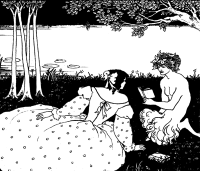
Aubrey Beardsley, design for the cover of the
prospectus for The Yellow Book, Volume I (April 1894), and an unused design for the cover of The
Yellow Book, Volume V. See
illustration.

Aubrey Beardsley, Messalina and her Companion, 1895, pencil, ink
wash and watercolor on paper,
27.9 x 17.8 cm, Tate Gallery, London.
![]()
![]()
![]()
![]()
Aubrey Beardsley, The Dream, 1896, pen
and black ink, J. Paul Getty Museum,
Malibu, CA.

Walter Richard Sickert (English, 1860-1942),
Aubrey Beardsley (1872-98), 1894, oil on canvas,
76.2 x 31.1 cm, Tate Gallery, London. Sickert's portrait of Beardsley was reproduced
in the reknowned journal of fin
de siècle art and literature, The Yellow Book,
while Beardsley was its art editor. Beardsley was by then a highly
celebrated artist.

Sir Max Beerbohm (English, 1872-1956), from
"Rossetti and his Friends", The Name of Dante Gabriel Rossetti is Heard for
the First Time in the Western States of America, 1916,
pencil and watercolor on paper,
40.0 x 36.8 cm, Tate Gallery, London. Oscar Wilde is portrayed
holding a lily as he speaks to an audience in the American West.
See caricature
and the Pre-Raphaelite
Brotherhood.
Also see aesthetics, art for art's sake, Art Nouveau, erotica and erotic art, isms and -ism, and sybaritic.
aesthetic value or æsthetic value - The value (worth) a thing or event has due to its capacity to evoke pleasure that is recognized as arising from features in the object traditionally considered worthy of attention. Also spelled esthetic.
aes ustum - Patina.
Afrocentrism - Believing that African cultural heritage must be more greatly represented in humanities curricula. Types of Afrocentrism vary widely, from straightforward demonstrations of black pride to claims that classic Greek philosophy was plagiarized from lost black sources and that the ancient Egyptians were actually black Africans. The term is most closely associated with the academic books of Molefi Kete Asante, but the issues should come up in discussions of the works of artists like Romare Bearden, Faith Ringgold, Betye Saar, and Henry Ossawa Tanner, among others:
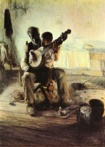
Henry Ossawa Tanner (American, 1859-1937), The Banjo Lesson, 1893, 49 x 35 1/2 inches, oil on canvas, Hampton University Museum, Hampton, Virginia.

Aaron Douglas (American, 1898-1979), Study for Aspects of Negro Life: The Negro in an African Setting, 1934, gouache on Whatman artist’s board, 37.1 x 40.6 inches, Art Institute of Chicago, IL. Aaron Douglas's paintings show that he was particularly influenced by ancient Egyptian sculpture and the modern Art Deco style. See Harlem Renaissance.

Aaron Douglas, Into Bondage, 1936, oil on canvas, 60 3/8 x 60 1/2 inches (153.35 x 153.67 cm), Corcoran Gallery, Washington, DC.

Faith Ringgold (American, 1930-), The Flag is Bleeding #2, acrylic on canvas; painted and pieced border, 76 x 79.5 inches, from the series "The American Collection," #6. See feminism and feminist art and flag. Visit the artist's Web site.
Other resources on Afrocentrism:
Also see African American art, androcentrism, anthropocentrism, ethnic, ethnocentrism, Eurocentrism, isms and -ism, and mathematics.
after - When used in an artist's inscription, it means that that artwork was modeled on the work of another artist. It may either be nearly identical to the other's work, or differ to some degree from it.
Examples:
Italy, Ostia, 2nd century CE after a Greek original of the 5th century BCE, The Hope Athena, marble, height 86 inches (218.4 cm), Los Angeles County Museum of Art.

Rembrandt van Rijn (Dutch, 1606-1669), The Last Supper, after Leonardo da Vinci
(Italian, 1634-1635), red chalk,
14 1/4 x 18 3/4 inches (36.2 x 47.5 cm), Metropolitan Museum
of Art, NY. See Baroque.

Vincent van Gogh (Dutch, 1853-1890), Noon: Rest From Work (After Millet),
January 1889-1890 (Saint-Rémy), oil
on canvas, Musée d'Orsay,
Paris, F 686. See Post-Impressionism.
Vincent van Gogh, First Steps (after Millet), January 1890 (Saint-Rémy), oil on canvas, 28 1/2 x 35 7/8 inches (72.4 x 91.2 cm), Metropolitan Museum of Art, New York, F 668.

Joel Peter Witkin
 (American, 1939-), Las Meninas (After Velázquez),
1987, photograph.
(American, 1939-), Las Meninas (After Velázquez),
1987, photograph.
Pablo Picasso, Maids of Honor (Las Meninas), after Velázquez, 1957, oil on canvas, 76 3/8 x 102 3/8 inches, Museu Picasso, Barcelona.
Diego Velázquez de Silva (Spanish,
1599-1660), The
Family of Philip IV, or "The Maids of Honor (Las Meninas)", oil on canvas, (318 x 276 cm), Prado
Museum, Madrid.] Also see Baroque,
Cubism, and
genre.

Richard Hamilton, Picasso's Meninas, 1973, etching
on paper, image 57.0 x 49.0 cm, Tate
Gallery, London. This is Hamilton's painting after Pablo Picasso's
painting after Velasquez's painting! See Pop Art.
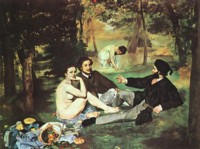
Pablo Picasso produced at least two paintings
after Édouard
Manet (French, 1832-1883), Luncheon on the Grass (Le Déjeuner sur
l'herbe), 1863, oil
on canvas, 81 x 101 cm, Musée
d'Orsay: Luncheon
on the Grass, after Manet, March 3 - August 20, 1960,
Vauvenargues, oil on canvas,
51 1/4 X 76 3/4 inches (130 X 195 cm); and Luncheon on the Grass, after Manet, 1961,
oil on canvas,
Galerie Rosengart, Lucerne, Switzerland. Picasso also produced
at least one such linoleum cut:
Luncheon on the Grass, after Edouard Manet,
linocut on Arches paper, 24.5 x 29.625 inches, image size: 20.875
x 25.125 inches, B.1097. See after,
gaze, Impressionism, and Realism.
![]()
![]()

![]()
Mona Hatoum (Palestinian, works in Britain,
1952-), Van Gogh's Back, 1995, photograph on paper,
60.0 x 40.3 cm, Tate Gallery, London. This is a photograph of
a man's hirsute back. The hair has been soaped and wetted and
swirled into patterns
which suggest the brushstrokes
in Van Gogh's paintings. Perhaps it's a bit of a stretch to say
that this is a picture "after" van Gogh! See documentation.

Unsigned, After Sir Thomas Lawrence (British, 1769-1830)
Pinky, paint-by-number,
16 x 20 inches. See a detail.
The original version of this paint-by-number painting is in the
collection of the Huntington Gallery, CA.
Also see appropriation, copy, counterfeit, forgery, homage, praise, and reproduction.
afterimage - An optical phenomenon in which the eye's nerves continue to convey an image after an initial image has departed. Typically, the afterimage appears as a likeness of the initial image, except that each of its colors is the complement to those in the initial image. Sometimes called a complementary afterimage or a photogene.
Examples:
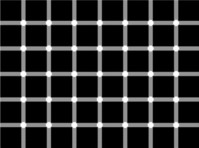
How many black dots can you find?
The black dots you see — and see disappear! — are afterimages. This figure is known as a "Hermann grid," named after its designer, L. Hermann, who visualized it in 1870, while reading a book about sound.
Stare at the + in the middle of the blue figure below for 15-30 seconds. Then move your gaze to the + in the center of the white square on the right.

The reversal of colors you saw was this phenomenon called an afterimage. Note how briefly (or how long) the afterimage endured before it was gone.
Here are links to three interactive demonstration of afterimages. You must use a JAVA-capable browser to see them properly: the first one, second: "put the fish in the fishbowl," and third: "change the colors of this flag."
Follow the directions at the bottom of
this last one to see a simulated Christian apparition.
Also see colorblind, grid, optical illusion, persistence of vision, seeing, and subliminal message or subliminal advertising.
agent - A representative. An artist's agent is an artist's business representative.
Age of Reason - See Enlightenment.
agglutinate - To cause adhesion, as with glue. To join together into a group or mass. Any glue or adhesive, especially a binder used in aqueous paints, pastel, and drawing inks, can be considered an agglutinant.
Also see adsorption, gouache, tempera, laminate, and watercolor.

aggregate - Inert granular material such as sand or gravel which is mixed with cement to make concrete or mortar, or with a binder to make some other solid compound. Sand is the most common aggregate. An aggregate might be added to a mixture to add strength, hardness, softness, color, texture, or economy. For instance, to make plaster easier to carve, one can add an aggregate of vermiculite or perlite (both available at gardening stores.)
Related resource:
Also see adobe, clay, filler, and manipulate.
agitprop - A combination of agitation and propaganda. It most often refers to communist or socialist oriented political propaganda disseminated especially through literature, art, theater, or music. Also, a work, such as a painting, sculpture, poster, or video, that is designed to impress a certain political or social attitude on its audience, with little or no consideration given to accuracy.
(pr. A-jət-PROP)
An example:
![]()

![]()
El Lissitsky (Russian, 1890-1941), The Machine tool depots . . .
, as photographed on a street in
Vitebsk in 1920. Like many other artists who supported the Bolshevik
coup of October 1917, Lissitsky actively attempted to advance
the ideas of the state by bringing his art to the masses. This
agit-prop panel bears an inscription that reads "The Machine
tool depots of the factories and plants await you. Let's get
industry moving." See inscription
and photography.
Also see advertising, fascist aesthetic, and Russian art.
agora - An open space used by ancient Greeks for assemblies and markets.
(pr. AG-ə-rə)
A.H. or AH - Placed beside a designated year, this abbreviation can stand either for Anno Hebraico, Latin for "in the Hebrew year," or it can stand for Anno Hegirae, Latin for "in the year of the Hegira." The Hegira refers to the flight of Mohammed from Mecca to Medina in CE 622, marking the beginning of the Moslem era. A reader generally knows which of these identical terms is being used because its context concerns either Jewish or Islamic history. Although, because these two cultures are so closely related, the reference must be made clear or it may cause confusion.
Also see A.D., B.C., B.C.E., C.E., Islamic art, and Jewish art.
AIA - See the American Institute of Architects.
aidoion - A Greek word used by archaeologist and historians of antiquities in referring to the private parts of men and women alike, usually on nude sculptures. The plural form is ta adoia, and is more frequently used than the singular.
Also see erotica and fig leaf.
![]()

![]()
![]()
aisle - In architecture, a long, narrow space on either side of the nave of a church, usually between a row of columns or piers and the outer wall. It is often referred to as a side aisle.
Also see cathedral, clerestory, crocket, Gothic, Middle Ages, trabeation, triforium, and vault.
![]()
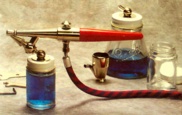
![]()
airbrush or air brush - A precision 
spray gun attached by a hose to an
electric air compressor (or other means of air pressure),
or the use of this device to spray paints, dyes or inks.
A great variety of spraying effects can be achieved using an airbrush,
typically for very smooth applications or gradation of color.![]()

![]()
The use of airbrush is strongly associated with commercial art, in which it is often used in illustrations, in photographic retouching, and other types of painting.
Computer "paint" and photography applications usually have the ability to simulate this painting method.
Related links:
A gallery of airbrushed works by Chris Collins with an eleven-step demonstration of his technical processes for achieving hyper-realism (extreme realism) .
Also see frisket and Photoshop.
Akkadian art - See Mesopotamian art.
Aktion - See Fluxus and Happening.
https://inform.quest/_art